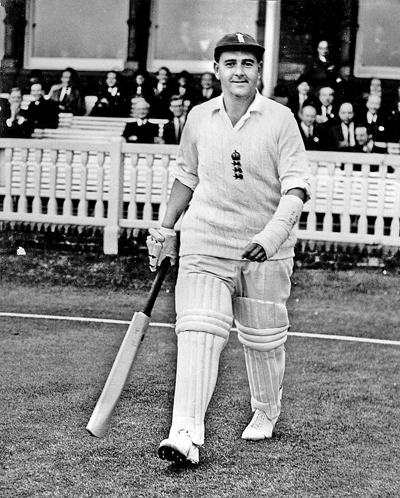When a son fulfilled dreams of a cricket-crazy father
View(s):
Colin Cowdrey- An ideal role model to young cricketers
On the Christmas Eve of 1932, in Putamala, Southern India, Michael Colin Cowdrey was blessed to the Cowdrey family. His father, Ernest Arthur, was a tea planter and a fanatical cricket buff. Arthur did play for the Surrey County second XI and for the Minor Counties but was not good enough to play first-class cricket. However when his son Colin was born, the delighted father put all his eggs on to the one basket – to compensate for what he missed playing cricket at the highest level. Firstly, he designed the son’s name so that the initials would be the same as those of the Marylebone Cricket Club (MCC), and immediately applied for membership for his son at this prestigious club. Little did the father know that, inter alia, 54 years later, his son would become the President of this club as well!
By the age of 13 years (some reckon it to be 15 years), Colin became the youngest to play at Lord’s, and in his first school game for Homefield Prep School he made a 100. However a re-check of the scorebook revealed Colin’s score to be 93. The venerable Jack Hobbs, having heard of this misadventure to the youngster, not only sent him a letter of commiseration, but a bat as well.
Not in father Arthur’s wildest dreams imagine that the apple of his eye would eventually become an incomparable icon on and off the field of cricket. Just look at his achievements, after entering and captaining Oxford University for starters:
The first to play 100 Tests and celebrated the event with a century (104) against Australia.
First to score centuries against all Test-playing nations in his era.
Represented England in 114 Tests scoring 7,264 runs at an average of 44.06 with 22 centuries and captained England in 23 Tests. Thus he beat two of Walter Hammond’s records, being aggregate of Hammond’s Test runs (7,249 runs), and catches numbering 120.
Was knighted in 1992 for his services to the game, given a life peerage, being one of two cricketers to be so honoured, the other being Learie Constantine of the West Indies.
He was also posthumously inducted to the ICC’s Hall of Fame and was honoured with a memorial service in Westminster Abbey.
Became the first President of the ICC during period 1989 – 1993.
Sadly, father Arthur, in a cruel twist of fate, was not to be alive when son Colin went on his first Ashes tour to Australia in the 1954-55 Ashes series. By the time the England team reached Perth the father had passed away.
Father Colin and son Chris captained Kent and England.
The MCC Spirit of Cricket Cowdrey Lecture, is an event in his honour organised by the MCC and was first hosted in 2001 following Lord Cowdrey’s death the previous year. Sri Lanka’s own, Kumar Sangakkara, made a stirring contribution at this event in 2011.
Statistics do not give a proper picture of Cowdrey’s sleek batting style which has been variously described as “ elegant”, “ beautiful to watch”, “does not appear to hit the ball but caresses it to the boundary, despite his rotund shape of his body”, and so on.
As a gentleman cricketer, he preached about respect for yourself, your opponent, the umpires and the game. MCC’s Spirit of Cricket – an addendum to the Laws of Cricket – was, as Mark Nicholas described, Colin’s baby, a brainchild adopted with Ted Dexter in the wake of deteriorating standards of player behavior at all levels, and mind you this was many years ago! In the year 2000 it was co-opted as a Preamble to the Laws of the game.
 Hubert Doggart, captain of Cambridge and Sussex, who played for England in 1950, paid a glowing memorial tribute to Colin in the Wisden Almanack, excerpts were:
Hubert Doggart, captain of Cambridge and Sussex, who played for England in 1950, paid a glowing memorial tribute to Colin in the Wisden Almanack, excerpts were:
“Although I had watched the end of his 116 against Cambridge in 1953, it was not until the 1954 season that I saw at close quarters the effortless stroke-play that became one of the hallmarks of his batting. He really did time the ball like an angel. We were opposing captains, he for Oxford and I for Sussex, on a grace term from Winchester College. I became immediately aware of his friendly authority and his innate devotion to the game, and we began a partnership and a friendship that lasted until his death……
The first chance we had to work together in cricket was 1956, when we went in harness, he as captain and I as vice-captain, on what could fairly be called E. W. Swanton’s First Missionary Journey to the West Indies…..”
There is more that needs be placed on record especially for the benefit of the growing generation about the doings of Lord Colin Cowdrey – both on and off the field. Suffice to say, here is an ideal role model to young cricketers.
In recent times there have been charges against the memory of this genial giant. As the old saying goes, “stones are thrown only at trees that bear fruit.”


